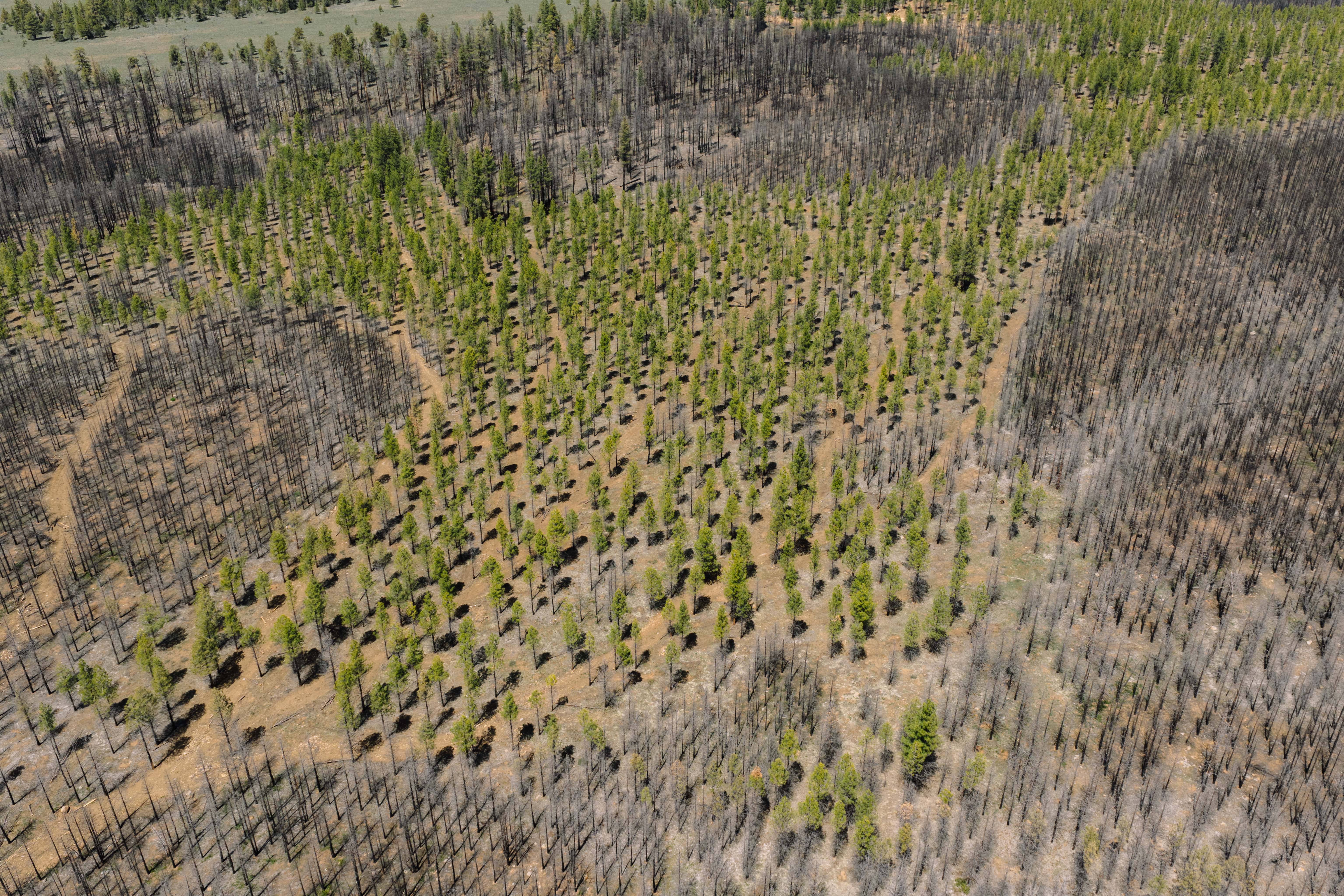Memorial Tree Planting: Six New Locations Added Across North America
Memorial trees are living tributes — rooted in the earth and in our hearts.
This season, we’re expanding A Living Tribute’s planting locations, giving you even more meaningful places to plant a tree in memory of a loved one.
Explore each forest below to see where these new tributes will take root — and open the exact Google Maps coordinates to view the tree planting and reforestation sites you’re helping bring back to life.
Oregon

The Bootleg Fire ignited in southern Oregon on July 6, 2021, and raged for over a month before finally being contained on August 15. By that time, it had scorched more than 413,000 acres of forest, making it the third-largest wildfire in Oregon’s history. The blaze left an indelible mark on the Klamath Falls Basin—a region celebrated for its biodiversity and as one of the state’s premier nesting areas for bald eagles.
Today, widescale reforestation efforts are helping this vital landscape recover. As new trees take root, the return of the forest canopy will provide essential habitat for birds, big game, and small mammals, while supporting one of the largest fish restoration efforts in U.S. history. In the coming years, the removal of four dams along the Klamath River will reopen more than 420 miles of historic habitat for salmon, bull trout, and the endangered Lost River sucker fish.
Each seedling planted throughout the basin contributes to the long-term recovery of this ecosystem—improving water quality, stabilizing soils, and restoring balance to a watershed that sustains both wildlife and local communities. Together, these efforts represent a powerful step toward healing one of Oregon’s most ecologically important regions.
California

Tens of thousands of native conifers, including ponderosa pine, sugar pine, and giant sequoia, are being planted to stabilize soils, reduce erosion, and restore wildlife habitat across the burn scar. Over time, these young trees will help re-establish a resilient, thriving forest ecosystem, ensuring the long-term recovery of one of California’s most treasured natural areas.
Michigan — Northern Lower Peninsula

New red pine replanting efforts are underway across four Michigan state land sites in Lake Margrethe, Wildwood, and Frederic, where mature 70- to 90-year-old tree stands have recently been harvested. These plantings will help quickly re-establish healthy forest cover, ensuring that these working forests continue to deliver both environmental and economic benefits for decades to come.
As the new generation of red pines grows, they’ll continue to sequester carbon, produce future forest products such as utility poles and dimensional lumber, and provide critical habitat for a wide range of wildlife species throughout each 70- to 90-year rotation cycle. Together, these replanting efforts support a sustainable forest legacy that balances conservation, habitat renewal, and the responsible use of natural resources.
Ontario

For much of the 20th century, the landscape surrounding Greater Sudbury, Ontario, was heavily degraded by industrial activity — including logging and the mining of nickel and copper ore. Hillsides were stripped bare, soils became contaminated, and vegetation largely disappeared, leaving behind a landscape of exposed rock and scarred terrain.
Since 1978, Sudbury has become the site of one of the world’s most successful urban reforestation and land restoration efforts. This long-term initiative has transformed the region, restoring forests, improving air and water quality, creating wildlife habitat, and giving residents renewed access to cleaner, greener spaces.
Today, restoration continues through the planting of carefully selected native tree species that reflect the area’s original ecosystem and support long-term regeneration. Species such as tamarack, ironwood, spruce, oak, jack pine, red pine, eastern hemlock, and mountain maple each play a vital role in returning biodiversity to this once-barren landscape — turning Sudbury into a model for large-scale ecological recovery.
Northern Alberta

The Sawle Lake region has been significantly impacted by wildfires over the years, most notably the McMillan Complex Fire in 2019, which severely burned vast areas of forest throughout the region.
Without intervention, these burned stands would be left to regenerate naturally—a process that has proven largely unsuccessful for white spruce–dominated forests. To restore the landscape and ensure healthy forest recovery, replanting efforts are focused on establishing new white spruce seedlings, which are vital for re-establishing the region’s natural forest composition and long-term ecological balance.
British Columbia

Severe wildfires have burned vast forested areas around Williams Lake, British Columbia, leaving behind understocked sites that have struggled to recover naturally. Years of drought have further slowed regeneration, putting additional pressure on an already fragile landscape.
This reforestation project is focused on restoring these impacted areas to support long-term ecological recovery. By planting a diverse mix of native tree and shrub species, the effort will enhance carbon sequestration, create improved wildlife habitat, and reintroduce important native plants such as berry-producing species vital for both biodiversity and local use.
Through this ongoing work, the project helps bring stability, resilience, and renewed life back to one of British Columbia’s fire-scarred regions—ensuring healthier forests for generations to come.
Plant a Tree in Memory — Follow Its Journey
Honor a life with a memorial tree that grows for generations. Choose your location, personalize your certificate, and help restore forests across North America.


